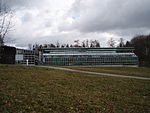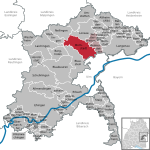Blaustein

Blaustein (German pronunciation: [ˈblaʊ̯ʃtaɪn]) is a town in the district of Alb-Donau Baden-Württemberg in Germany. It is situated on the Blau River, 6 km west of Ulm and has about 15,000 inhabitants. Before 1968, Blaustein was known as Herrlingen. It was created in 1968 after the union of Ehrenstein and Klingenstein. During the 1970s, the municipalities of Arnegg, Bermaringen, Dietingen, Herrlingen, Lautern, Markbronn, Weidach and Wippingen became part of the new municipality of Blaustein. Herrlingen was the home of Anna Essinger's boarding school, Landschulheim Herrlingen, founded in 1926. In 1933, with the rise of Nazism, Essinger moved the school and, with their parents' permission, the school's 66 Jewish pupils to safety in England.
Excerpt from the Wikipedia article Blaustein (License: CC BY-SA 3.0, Authors, Images).Blaustein
Arnegger Straße,
Geographical coordinates (GPS) Address Nearby Places Show on map
Geographical coordinates (GPS)
| Latitude | Longitude |
|---|---|
| N 48.418333333333 ° | E 9.9080555555556 ° |
Address
Arnegger Straße 2
89134
Baden-Württemberg, Germany
Open on Google Maps







